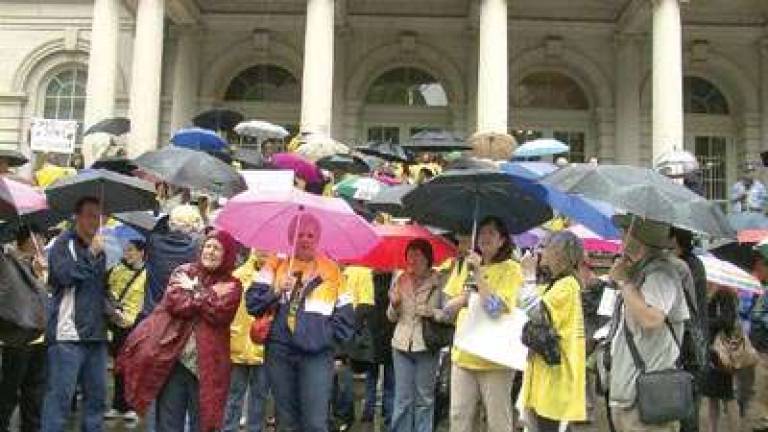Residents Continue Fight Against Garbage Dump

It's been six years since the city passed its Solid Waste Management Plan, a system that promises to be a cost-effective, environmentally sound solution to handling the city's solid waste. But Upper East Side residents are still fighting one key component of the plan: the reopening of the East 91st Street Marine Transfer Station (MTS). (By Laura Shin) "We have a belief that you don't want to put trash dumps in poor, minority neighborhoods, nor, on the other hand, do you want to put trash in residential neighborhoods," said Jed Garfield, president of Residents for Sane Trash Solutions, a neighborhood organization dedicated to fighting the opening of the MTS. Residents for Sane Trash Solutions and dozens of residents, along with City Council Members Jessica Lappin and Dan Garodnick, gathered on the steps of City Hall recently to protest. They believe the proposed MTS, planned to be a two-acre, 10-story facility along the East River, will have a significant negative impact on their neighborhood. "It would wreak havoc on a residential community. It would bisect a park where tens of thousands of children come to play. It would ruin our air," Lappin said at the rally. Garfield said his group believes the project will cost $400 million, based on a recent independent study. According to Mayor Michael Bloomberg's Executive Budget released in early May, the 91st Street MTS has a budget of $226 million. The city currently relies on a truck-based system, where in the city's waste is transported from a number of land-based waste transfer stations in the city to areas outside of New York. The 91st Street MTS, along with three other converted marine transfer stations-two in Brooklyn and one in Queens-is part of a larger plan to reduce trucks trips by moving to a barge-and-rail system for long-haul waste disposal using the city's waterways and existing MTS network. "You're talking about over 100 truck trips that each one of these barges would eliminate," said Eddie Bautista, executive director of the New York City Environmental Justice Alliance. According to a May 15 statement released by the Environmental Justice Alliance and a coalition of groups that support the Solid Waste Management Plan, the 91st Street MTS would offer relief to low-income communities of color that are currently overburdened because the majority of the city's land-based transfer stations are located there. "We all know that the burden of garbage facilities has been borne by disadvantaged communities. That is unjust," said Garodnick. "But the city is not correcting that injustice by doing the same thing on the back porch of a public housing complex home to 2,200 New Yorkers or the thousands of other New Yorkers who live right across the street." The MTS operated from 1940 to 1999. Some residents fear reopening the facility would mean the odors and rodent problems that existed before would return. CIVITAS, a group dedicated improving the quality of life on the Upper East Side and in East Harlem, supports the MTS. "Conditions have been imposed by the state that make it acceptable to go forward with this marine transfer station," said Gorman Reilly, vice president and board member of CIVITAS. Reilly said the facility's ramp has been designed to hold more trucks, so there will be no queuing on residential streets. He said a Department of Sanitation employee would also be at the bottom of the ramp to help direct traffic, ensuring safety in the area. Still, residents are concerned. "I feel it'll create a lot of noise; it'll create a lot of filth; it'll create a lot of congestion; it will endanger the health of children," said Alison Grillo, a nearby resident who attended the rally. She added that if the MTS opens, she might have to consider leaving the neighborhood.